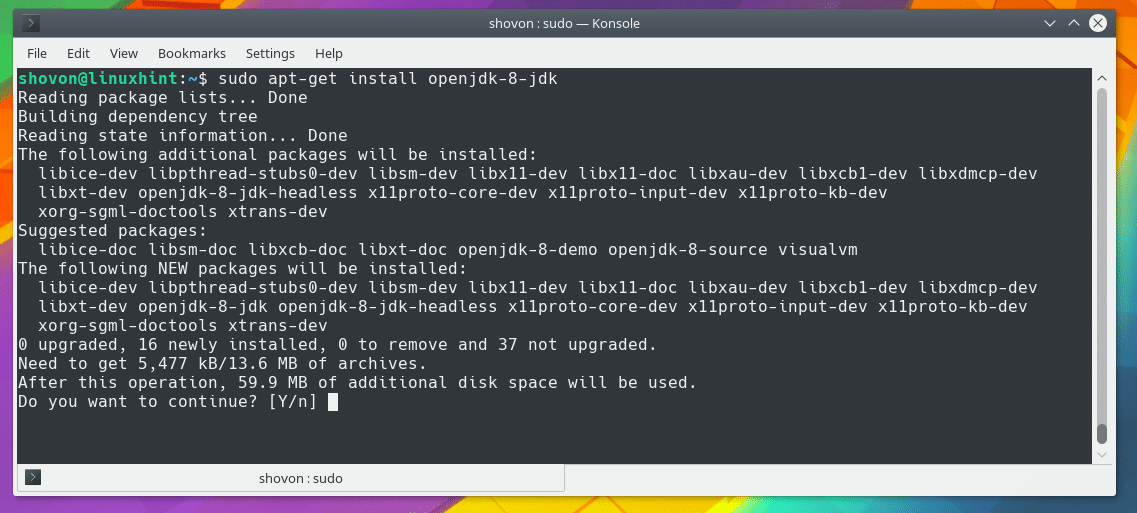
- OPENJDK 8 DOWNLOAD HOW TO
- OPENJDK 8 DOWNLOAD ANDROID
- OPENJDK 8 DOWNLOAD CODE
- OPENJDK 8 DOWNLOAD WINDOWS
In that case you'll need to " eject" eventually to create your own native builds. If you know that you'll eventually need to include your own native code, Expo is still a good way to get started.
OPENJDK 8 DOWNLOAD CODE
Caveatsīecause you don't build any native code when using Expo to create a project, it's not possible to include custom native modules beyond the React Native APIs and components that are available in the Expo client app.
OPENJDK 8 DOWNLOAD ANDROID
Once you've set these up, you can launch your app on an Android Virtual Device by running npm run android, or on the iOS Simulator by running npm run ios (macOS only).
OPENJDK 8 DOWNLOAD HOW TO
If you want to run your app on the iOS Simulator or an Android Virtual Device, please refer to the instructions for "React Native CLI Quickstart" to learn how to install Xcode or set up your Android development environment. Running your app on a simulator or virtual deviceĮxpo CLI allows you to run your React Native app on a physical device without setting up a development environment.

If you're curious to learn more about React Native, check out the Introduction to React Native.

Now what?Įxpo also has docs you can reference if you have questions specific to the tool. That's it!Ĭongratulations! You've successfully run and modified your first React Native app. The application should reload automatically once you save your changes. Open App.js in your text editor of choice and edit some lines. Now that you have successfully run the app, let's modify it. On iOS, use the built-in QR code scanner of the Camera app. On Android, use the Expo app to scan the QR code from your terminal to open your project. Install the Expo client app on your iOS or Android phone and connect to the same wireless network as your computer. Installs plugin.jar into the jre\lib directory.This will start a development server for you. Keeps settings and caches on the local file system.
OPENJDK 8 DOWNLOAD WINDOWS
This enables Jar files to be run from within Windows Explorer.Ĭontains files that are installed in the \missioncontrol directory.Īppends \missioncontrol to the system PATH environment variable.Įnables the launching of JNLP files downloaded from the web.Įnables the launching of JNLP files downloaded from the web from the local file system. REDHAT_JAVA_HOME can be used by some programs to find the Red Hat OpenJDK runtime. OpenJDK Runtime - REDHAT_JAVA_HOME System Variable JAVA_HOME is used by some programs to find the Java runtime. OpenJDK Runtime - JAVA_HOME System Variable The following registry keys are set HKLM\Software\JavaSoft\JDK\, entries: JavaHome: RuntimeLib: \bin\server\jvm.dll HKLM\Software\JavaSoft\JDK, entries: CurrentVersion: Īdds the Runtime to the Path variable so it is available from the command line. Web browser plugin implementation is not included. Installs plugin.jar into /jre/lib/ for compatibility with third-party applications.

Migrate WebStart local settings and cache on update. WebStart files, installed into \webstart.Īssociation for JNLP files and jnlp:// URLs.Īppends \webstart to the system %PATH% environment variable. Launch JAR files using the OpenJDK context menu.Īppends `/missioncontrol to the 'PATH' system environment variable. Sets to the system %REDHAT_JAVA_HOME% environment variable.Īssociation for JAR files. Sets to the system %JAVA_HOME% environment variable. RuntimeLib: \jre\bin\server\jvm.dll jdk_env_pathĪppends \bin and \jre\bin to the system %PATH% environment variable. HKLM\Software\JavaSoft\Java Development Kit\1.8_, entries: HKLM\Software\JavaSoft\Java Development Kit\1.8, entries: HKLM\Software\JavaSoft\Java Development Kit, entries: RuntimeLib: \jre\bin\server\jvm.dll jdk_registry_standard_devel HKLM\Software\JavaSoft\Java Runtime Environment\1.8_, entries:

HKLM\Software\JavaSoft\Java Runtime Environment\1.8, entries: HKLM\Software\JavaSoft\Java Runtime Environment, entries: Runtime environment files (excluding development tools).


 0 kommentar(er)
0 kommentar(er)
